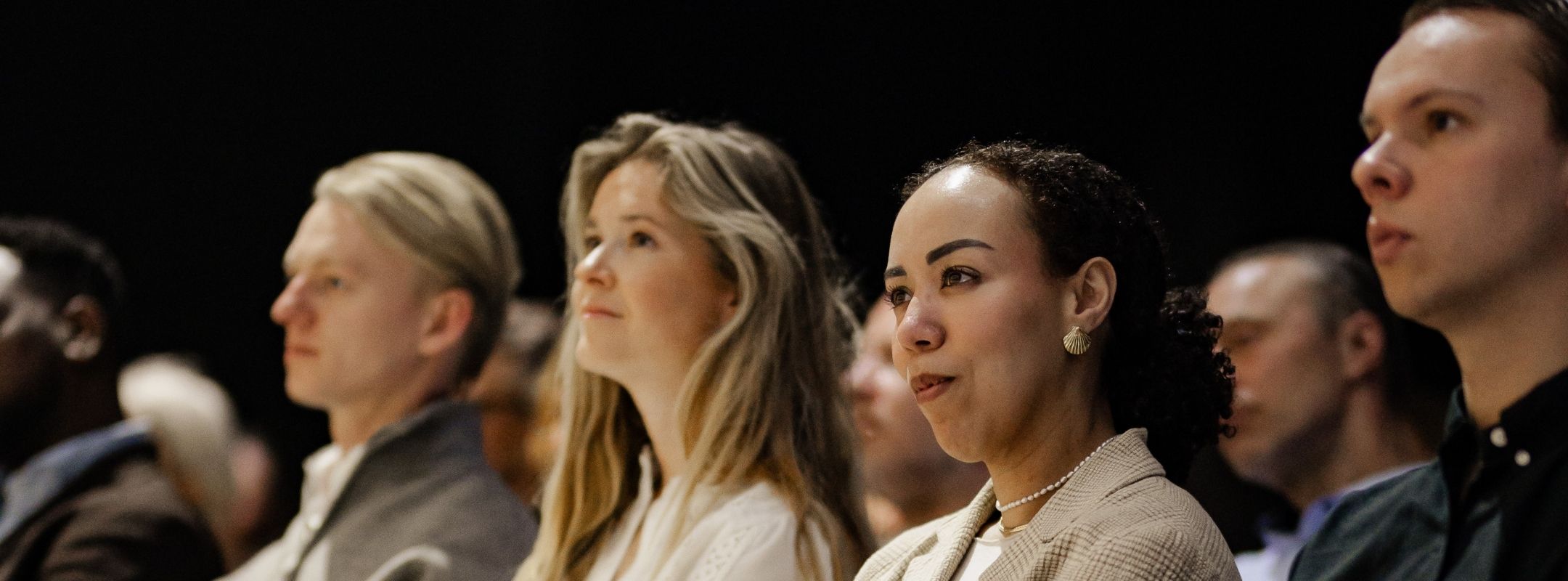How to manage generational diversity in the workplace

The modern workplace is more diverse than ever, with Baby boomers, Gen Xers, Millennials, and Gen Zers all working together. And while this mix can lead to clashes, it also offers a wealth of opportunities. Ignoring generational differences is a missed opportunity. When a manager embraces this diversity and effectively applies generational management, they can unlock countless benefits.
What is generational management?
As a manager, you’re practising generational management when you’re considering the generational differences in the workplace. This allows you to empower and harness the full potential of your employees. Each generation has different strengths and weaknesses. Instead of letting those obstruct each other, the various age groups can assist one another. Strong and specialised leadership is required for this. This already starts with the application process.
It is in our nature to prefer those more similar to us. This is called the in-group. The in-group often shares similar diversity characteristics, hobbies, and interests. The in-group also has a similar age, meaning a generation.
Curious about the four generations? Read more about who they are and what characterises them.
A world of opportunities
A company gains many benefits from bridging the so-called generational gap as it brings together diverse perspectives. Effective communication is crucial for any organisation, especially when implementing generational management. When generations misunderstand each other concerning work methods, technology, or company values, it can lead to conflicts and reduced productivity. Examples of generational differences often revolve around connections (or lack thereof) between the generations. To truly understand each other, you must invest time in one another.
Generations all have different ways of thinking and problem-solving. By using brainstorming sessions, you can combine baby boomers’ decades of experience with the innovative ideas Gen Zers bring to the table. The result? Innovation. Because for a company to truly innovate, it needs to pick up on all market signals, which requires people of all ages.
Younger generations have grown up with technology and readily apply it daily. If you combine this skillset with the babyboomers’ knowledge and experience of the company, you can innovate whilst preventing old mistakes from being repeated.
And there are many more advantages to having people of different ages working together. When generations learn from one another, it’s called generational learning. When this is stimulated, work culture becomes more inclusive, and innovation happens on both practical and social levels. Knowledge is passed on promptly, and more creative collaboration occurs.
Differente generations, different leadership styles
Different generations require different forms of leadership. As we’ve established, people who grow up in other times have different needs. The stability a Gen Xer seeks in the workplace stands in stark contrast with the constant growth opportunities valued by a Gen Yer. Gen Z prioritises hobbies more than previous generations and wants time for them. Additionally, this younger generation, partly raised during the COVID-19 pandemic, is less tied to fixed working hours and locations. Understanding the needs of different generations allows you to correctly facilitate flexibility or stability as a manager. But how do you, as a manager, make this happen?
Effective and goal-oriented leadership
Firstly, it’s important to know and understand the characteristics of the different generations. What’s a millennial’s view of the world? What characterises a Gen Xer? Knowing this requires persistence and a bit of self-reflection. Look at yourself as a manager. What’s your worldview? What are your biases, and do they stem from your generation? With empathy and effort, you can understand how different generations view the workplace and show understanding of their perspectives.
Don't judge based on hours worked
Not just you but your entire team needs to become aware of generational learning. People may be annoyed by the communication or work styles of other generations because they are not used to them or have different preferences. For example, a millennial who enjoys travelling and having flexible working hours, may arrive later, or work from other countries more often. Meanwhile, a boomer who values personal contact and face-to-face communication prefers physical meetings and direct interaction with colleagues.
By investing in raising awareness of generational learning among your employees, they will not judge each other. It’s important you stop judging, too. An easy first step is not to judge people based on the number of hours they work but rather on the quality of their output. Perhaps, with the arrival of younger generations, the criterion ‘hours worked per week’ will eventually disappear.
Additionally, as a manager, you will need to employ different leadership styles. With a boomer, it’s wise not to issue orders but to ask questions. A Gen Zer is often more sensitive, so you want to provide constructive feedback. Experts suggest taking on a mentorship role with a millennial to give this ambitious generation a sense of perspective. When dealing with a Gen Xer, you want to manage based on output, set goals, and avoid being too strict on the rules.

With the arrival of younger generations in the workplace comes a change in expectations. Generation Y and Z have a desire to make a positive impact on the world. As a manager, you want to give these individuals space to create social impact. A good example of this is by letting them work on creative or sustainable projects for half a day each week. By facilitating younger generations, you increase the likelihood that they will stay with your company. And that’s incredibly important as, with the quickly ageing workforce, there are relatively fewer young people who can take over the reins of your organisation.
To retain younger generations, you’ll need to assign them to management positions. This may seem daunting initially, but it’ll bring plenty of benefits. When younger generations are present in the boardroom, they help shape the company to better fit the current generations – and the future market. It will happen eventually, so why not now?
Continuous development
Lastly, every generation wants to continue learning, though in different ways. Even someone who has been working at the organisation for decades, as a leader, you also want to give them the opportunity to continue learning. Investing in employees and generations will be rewarded, both from within and outside the organisation. When your organisation is known as a reliable learning environment, it attracts new talent, who can then contribute to your multigenerational team.
A deep dive into Gen Z
The new generation stands for change. If you don’t understand them, they’re unlikely to want to work for you.
In our whitepaper, we dive deep into the world of Gen Z and offer insights and practical tips for the workplace!



